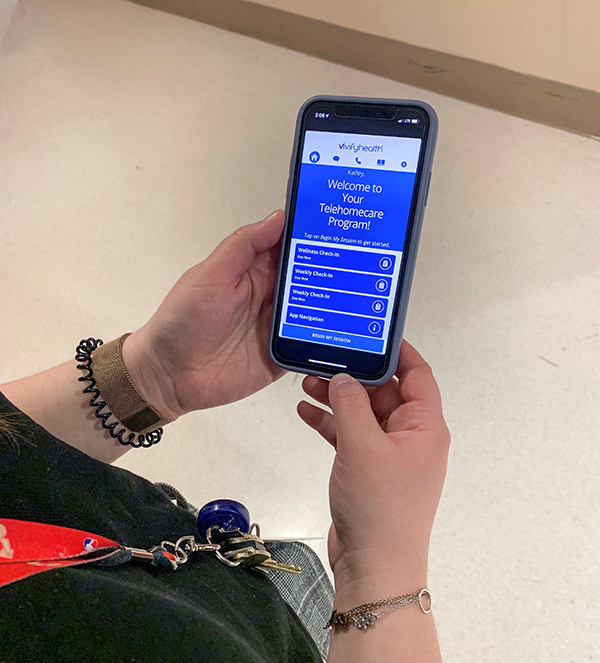North York General’s Mental Health Remote Monitoring app an Ontario first

As we enter the second year of the pandemic, organizations continue to innovate at a dizzying pace to help people stay safe and well. Increasingly, clinical-based virtual care is supplementing and even replacing traditional in-person visits. Health care through video sessions or text messaging, for example, is now well accepted by patients and caregivers of all ages and backgrounds.
North York General has launched a new remote monitoring program to support patients in their homes and prevent the risk of hospital readmissions and repeat Emergency Department (ED) visits… The new North York Toronto Health Partners (NYTHP) CareConnect utilizes an app called Vivify to monitor two patient populations: Depression and Anxiety for Mental Health and Falls Prevention for Frail and Elderly.
“Increasingly, innovative mental health programs are combining digital tools and virtual care to create a robust system to enhance symptom monitoring and access to evidence-based treatments. The combination of virtual and in-person visits, provides flexible alternatives within the health care system all while improving access and convenience for patients,” says Dr. David Koczerginski, Chief of Psychiatry & Medical Director, Mental Health Program at NYGH.
The Mental Health program application, which went live in early February is enhancing symptom monitoring and rapid care for those with mental health concerns.
North York General’s Mental Health team, Geriatric Emergency Management (GEM) Nursing team and Information Services team joined forces to develop new digital care pathways that help assess patients’ needs once they have been discharged from hospital and throughout their recovery at home.
“It has been a truly collaborative effort across our Digital, Mental Health and ED teams to design this first-in-Ontario mental health remote monitoring pathway. We look forward to expanding this capability across other patient populations in partnership with the NYTHP,” says Duska Kennedy, Chief Digital Officer, Information Services at NYGH.
How does it work?
Once the remote monitoring app is downloaded, the health care team reviews each patient’s progress using a series of regularly administered electronic questionnaires. Next steps depend on each patient’s individual responses. Stable patients will continue to be monitored at home, while sicker patients will have their care escalated to a physician for a virtual visit or be asked to return to the Charlotte & Lewis Steinberg Emergency Department for further assessment. Patients can also reach out to the team in real-time to ask questions via secure messaging.
“I’m noticing for our younger patients, using smartphones and technology to connect is more comfortable for them. And, a 10-minute video call to respond to a patient’s worsening mood or anxiety, focused on skill coaching, can make a world of difference to them in a moment that can often feel quite isolating,” says Kailey Feldman, Social Worker at NYGH.
The virtual patient journey typically includes between five and eight virtual assessments. Most patients will be discharged from the program once symptoms improve. The virtual program may also act as a bridge until patients are referred to other outpatient services, such as our NYGH Outpatient and Community Services Centre and NYGH Specialized Geriatric Services.
Expanding North York General’s virtual care offering is a key component of our Digital Health Strategy.
“This innovative connected care model leverages technology to provide our patients with a support network of health professionals that conduct daily reassessments of their health status. We can support better health outcomes for our patients, while giving them what they want: the ability to recover at home, while still being connected quickly and easily to the help they need.” said Dr. Jeremy Theal, chief medical information officer.
This initiative is supported by Ontario Ministry of Health funding to enhance virtual care options to ensure continuity of health services during the pandemic while preventing the spread of COVID-19.
